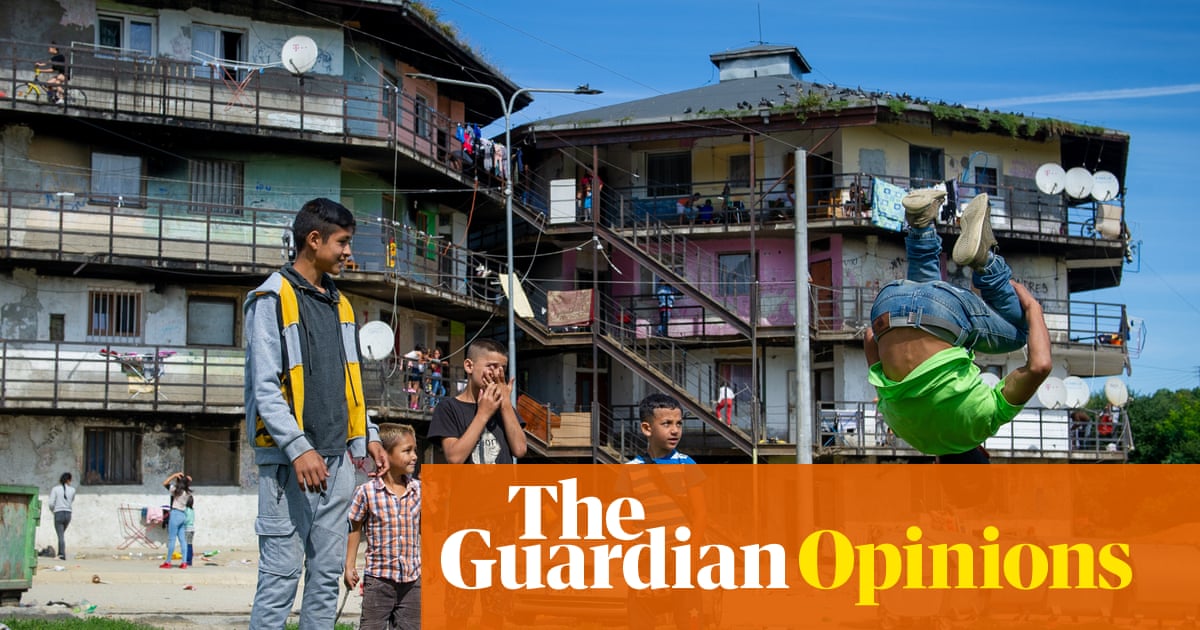It may come as a surprise to many, but racial segregation in schools exists today in several countries in the EU. In Slovakia,more than 60% of Roma children attend schools where they are in the majority. Worse still: segregation is being rebranded, not removed.
In nearly a quarter of all primary schools, Roma children are separated into “Roma schools” or “Roma classes” – often in overcrowded buildings, with lower academic expectations, higher drop-out and grade repetition rates, and with little or no clear path to equal participation in life. Furthermore, Roma pupils areoften placedin schools and classes for children with mental disabilities.
As activists, we are told it’s about language. Or behaviour. Or parental choice. Or mental disability. Or because Roma often live in spatially segregated neighbourhoods. We are told it’s temporary. However, as the years (and decades) go by, the situation remains the same.
Roma inSlovakia, like elsewhere in Europe, have been pushed to the margins of society. As a result of centuries of antigypsyism (the specific form of racism towards Romany people), Roma have long been treated with suspicion and hatred. This has resulted in Europe’s largest ethnic minority group also arguably being the most discriminated against. In Slovakia, there are many Romany communities living in such poor conditions (often without access to even running water or electricity) as to be unrecognisable to most Europeans as places to live.
The level of discrimination at every level of society is sometimes overwhelming. But among the many barriers to Roma in this informal apartheid, education can offer a small chance for new generations to escape. It is a cornerstone of equality – the place where inclusion begins. Yet in Slovakia, school remains one of the many institutions where they are systematically separated from the rest of society. As the US supreme court ruled in 1954 in theBrown v Board of Educationcase: “Separate educational facilities are inherently unequal.”
Despite legal guarantees at national and EU level, decades of pressure from civil society and international human rights bodies, judgments issued by courts and evenproceedings initiated against Slovakia by the European Commission, segregation continues to define the educational experience of tens of thousands.
For several years, the Slovak government denied discriminatory treatment of Roma pupils. They justified the overrepresentation of Roma children in the special education system by stating that Roma in Slovakia have ahigher occurrence of genetically determined disordersbecause of “the highest coefficient of interbreeding” in Europe. It was only in 2020 that the Slovakian governmentfinally openly acknowledged the existence of the segregationand undertook steps to eradicate it.
Several reforms have been introduced. A legal definition of segregation has been added to the School Act. Legally binding standards on desegregation have been published. Legal entitlement to kindergarten has been expanded. Introductory grades were introduced in place of the previously criticised “zero grade classes” (catchup school years to allegedly bring students to the mainstream level), which were attended largely by Roma pupils. A pilot project branded as a “Roma national school” was announced that would rebrand segregated schooling under the guise of minority rights to learn in your own language and cultural environment, while in effect changing nothing about the segregated schools.
Taken in isolation, and without context, some of these measures may appear constructive. But implemented without clear safeguards, oversight and coordination, they often reinforce the very segregation they claim to address. The new desegregation standards focus primarily on classroom-level inclusion within segregated schools, rather than addressing school-level segregation. Similarly, the creation of Roma national schools could lead to institutionalised segregation at the school-level under the pretext of minority rights.
The shift in name from “zero grade classes” to “introductory grades” is another example. Though meant to improve school readiness, these classes often replicate the same segregated logic – delaying Roma children’s access to mainstream education and streaming them into separate pathways.
Slovakia must stop managing segregation and start ending it. We already know what works: diverse classrooms, mixed environments, early and emphatic support. These are not radical ideas.
Responsibility lies not only with Slovakia. The persistent segregation of Roma children constitutes a longstanding violation of the race equality directive and the EUcharter of fundamental rights. Meanwhile, European Commission targets ofreducing segregation of Roma in primary schoolsbyonly50% by 2030 not only give a free pass to segregationists across the bloc, but undermine the illegality of segregation in the first place. The EU cannot afford to look away. Allowing segregation by repacking it undermines the credibility of its commitment to equality and human rights. Segregation, by any other name, remains segregation. The EU must respond to this systemic failure now, before yet further generations of Romany children are denied a future.
Kamila Gunišová is a researcher at Amnesty International Slovakia and Michal Zálešák is a legal consultant for the European Roma Rights Centre and attorney-in-law working in Slovakia
